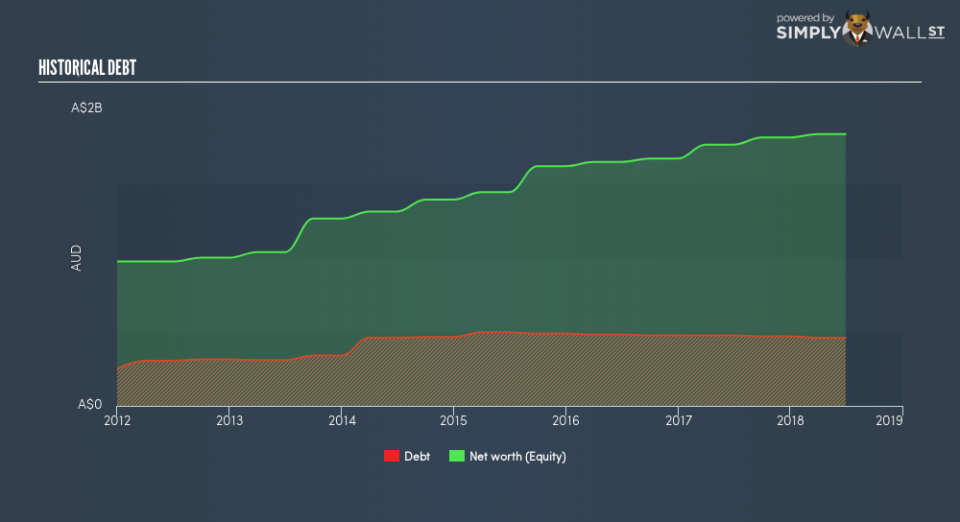What You Need To Know Before Investing In BWP Trust (ASX:BWP)

BWP Trust is a AU$2.2b small-cap, real estate investment trust (REIT) based in Perth, Australia. REIT shares give you ownership of the company than owns and manages various income-producing property, whether it be commercial, industrial or residential. The structure of BWP is unique and it has to adhere to different requirements compared to other non-REIT stocks. I’ll take you through some of the key metrics you should use in order to properly assess BWP.
See our latest analysis for BWP Trust
Funds from Operations (FFO) is a higher quality measure of BWP’s earnings compared to net income. This term is very common in the REIT investing world as it provides a cleaner look at its cash flow from daily operations by excluding impact of one-off activities or non-cash items such as depreciation. For BWP, its FFO of AU$113m makes up 80% of its gross profit, which means the majority of its earnings are high-quality and recurring.
Robust financial health can be measured using a common metric in the REIT investing world, FFO-to-debt. The calculation roughly estimates how long it will take for BWP to repay debt on its balance sheet, which gives us insight into how much risk is associated with having that level of debt on its books. With a ratio of 25%, the credit rating agency Standard & Poor would consider this as aggressive risk. This would take BWP 4.08 years to pay off using operating income alone. Given that long-term debt is a multi-year commitment this is not unusual, however, the longer it takes for a company to pay back debt, the higher the risk associated with that company.
I also look at BWP’s interest coverage ratio, which demonstrates how many times its earnings can cover its yearly interest expense. This is similar to the concept above, but looks at the upcoming obligations. The ratio is typically calculated using EBIT, but for a REIT stock, it’s better to use FFO divided by net interest. With an interest coverage ratio of 5.25x, it’s safe to say BWP is generating an appropriate amount of cash from its borrowings.
In terms of valuing BWP, FFO can also be used as a form of relative valuation. Instead of the P/E ratio, P/FFO is used instead, which is very common for REIT stocks. BWP’s price-to-FFO is 20.28x, compared to the long-term industry average of 16.5x, meaning that it is overvalued.
Next Steps:
As a REIT, BWP Trust offers some unique characteristics which could help diversify your portfolio. However, before you decide on whether or not to invest in BWP, I highly recommend taking a look at other aspects of the stock to consider:
Future Outlook: What are well-informed industry analysts predicting for BWP’s future growth? Take a look at our free research report of analyst consensus for BWP’s outlook.
Valuation: What is BWP worth today? Is the stock undervalued, even when its growth outlook is factored into its intrinsic value? The intrinsic value infographic in our free research report helps visualize whether BWP is currently mispriced by the market.
Other High-Performing Stocks: Are there other stocks that provide better prospects with proven track records? Explore our free list of these great stocks here.
To help readers see past the short term volatility of the financial market, we aim to bring you a long-term focused research analysis purely driven by fundamental data. Note that our analysis does not factor in the latest price-sensitive company announcements.
The author is an independent contributor and at the time of publication had no position in the stocks mentioned. For errors that warrant correction please contact the editor at editorial-team@simplywallst.com.

 Yahoo Finance
Yahoo Finance 
